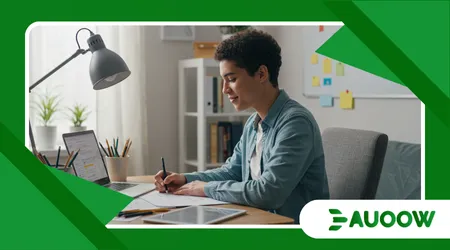How to Design Homework for Students with Executive Function Challenges

To design homework for students with executive function challenges, educators must prioritize flexibility, clarity, and support.
Executive function (EF) challenges, often seen in students with ADHD, autism, or learning disabilities, impact skills like planning, organization, and task initiation.
These difficulties can make traditional homework feel overwhelming, leading to frustration and disengagement.
In 2025, as inclusive education evolves, tailoring assignments to support these students is critical.
This article explores practical, research-backed strategies to create accessible homework, ensuring every learner thrives. Why settle for one-size-fits-all when we can empower all students?
Inclusive education demands innovative approaches to meet diverse needs. Homework, a cornerstone of learning, often poses barriers for students with EF challenges.
By rethinking assignment design, educators can foster engagement and success. This piece offers actionable insights, grounded in real-world practices, to help teachers craft meaningful tasks.
From breaking down assignments to leveraging technology, we’ll dive into strategies that work. Let’s explore how to make homework a tool for growth, not a hurdle.
Understanding Executive Function Challenges
Executive function encompasses cognitive skills like time management, prioritization, and self-regulation. Students with EF challenges struggle to break tasks into manageable steps.
They may forget instructions, procrastinate, or feel paralyzed by complex assignments.
According to a 2023 study by the National Center for Learning Disabilities, 20% of students with learning disabilities exhibit significant EF difficulties, impacting academic performance.
Recognizing these struggles is the first step to designing effective homework.
Unlike traditional learners, these students need explicit structure and support. Imagine a chef trying to cook without a recipe chaos ensues.
Similarly, unclear homework instructions can overwhelm students with EF challenges. Teachers must act as guides, providing clear, actionable steps.
++ From Labels to Support: Changing the Language of Inclusive Education
This understanding shapes how we approach assignment design, ensuring accessibility without sacrificing rigor.
Empathy drives effective solutions. Students with EF challenges aren’t “lazy” or “disorganized” by choice their brains process tasks differently.
Acknowledging this fosters patience and creativity in educators. By viewing homework through their lens, teachers can craft assignments that build confidence and skills. This mindset shift is foundational to inclusive education in 2025.

Strategies to Design Homework for Students with Executive Function Challenges
Break Tasks into Smaller Steps
Complex assignments can feel like climbing a mountain for students with EF challenges. Break homework into bite-sized tasks to reduce overwhelm.
For example, instead of assigning “write a 500-word essay,” provide steps: brainstorm ideas, draft an outline, write 100 words daily. This approach builds momentum and clarity.
Visual aids, like checklists, help students track progress. A 2024 Edutopia article highlighted how checklists improve task completion by 30% for students with ADHD.
Each completed step boosts confidence, creating a positive feedback loop. Teachers can also model this process in class, showing how to dissect tasks.
Also read: Why Inclusion Fails Without Cultural Sensitivity in the Classroom
Consistency matters. Regularly using step-by-step formats helps students internalize planning skills.
Over time, they may apply these strategies independently, fostering long-term growth. This method doesn’t lower expectations it provides a scaffold for success.
Provide Clear, Concise Instructions
Ambiguity is the enemy of progress for students with EF challenges. To design homework for students with executive function challenges, prioritize crystal-clear instructions.
Use bullet points, numbered steps, or bolded keywords to highlight critical details. For instance, instead of “research a topic,” specify “find three reliable sources on renewable energy by Wednesday.”
Written and verbal instructions should align. Recording brief audio explanations can help students revisit directions at home. This caters to varied processing styles, ensuring no one feels lost.
Clarity reduces anxiety, making homework approachable.
Technology can enhance this strategy. Apps like Notion or Google Keep allow teachers to share organized instructions.
Students can access these anytime, reinforcing independence. Clear instructions aren’t just helpful they’re transformative for struggling learners.
Read more: Inclusive Classrooms vs. Special Ed Rooms: What’s Really Better?
Incorporate Choice and Flexibility
Choice empowers students with EF challenges. To design homework for students with executive function challenges, offer options within assignments.
For example, let students choose between writing a paragraph, creating a slide deck, or recording a voice memo to demonstrate understanding. This fosters ownership and engagement.
Flexible deadlines also help. Allow students to submit work within a reasonable window, like three days, to accommodate planning struggles.
A 2024 study from the Journal of Special Education found flexible deadlines increased completion rates by 25% for students with EF difficulties. Flexibility doesn’t mean leniency it means trust.
Variety keeps students motivated. Rotate formats, such as graphic organizers or short videos, to prevent monotony.
When students feel in control, they’re more likely to engage. Choice transforms homework from a chore into an opportunity.
Leverage Technology for Support
In 2025, technology is a game-changer for inclusive education. To design homework for students with executive function challenges, use tools like speech-to-text software or task management apps.
Apps like Todoist help students organize tasks, while platforms like Quizlet support memory retention through interactive study aids.
Digital timers, such as Focus@Will, can help students manage time. For example, a student might work in 15-minute bursts with breaks, a technique called the Pomodoro method.
These tools make abstract EF skills concrete, supporting independence.
Teachers should guide students in selecting tools that match their needs. A one-size-fits-all approach fails here personalization is key.
By integrating technology thoughtfully, educators empower students to overcome EF barriers effectively.
Foster Collaboration and Support Systems
Involve Families in the Process
Homework success often hinges on home support. To design homework for students with executive function challenges, communicate with families about assignment expectations.
Share strategies, like setting up distraction-free workspaces, to create consistency between school and home environments.
For example, a teacher might send a weekly email outlining tasks and suggested timelines. This keeps parents informed without overwhelming them.
Families can reinforce skills like time management, but they need clear guidance to do so effectively.
Building trust with families is crucial. Regular check-ins, like brief phone calls, ensure alignment.
When parents and teachers collaborate, students feel supported, boosting their confidence to tackle homework challenges.
Encourage Peer Support
Peer collaboration can lighten the load for students with EF challenges. To design homework for students with executive function challenges, incorporate group-based tasks.
For instance, assign a project where students brainstorm together but complete individual components. This fosters accountability and reduces isolation.
Study buddies can also help. Pair students to check in on progress via text or video calls.
This builds social skills while reinforcing task completion. Peers become cheerleaders, not competitors, creating a supportive learning community.
Teachers should model collaboration first. In-class group activities teach students how to work together effectively.
Over time, these skills transfer to homework, making it less daunting and more collaborative.
Monitor and Adjust Based on Feedback

Use Ongoing Assessment
Feedback is a cornerstone of effective homework design. To design homework for students with executive function challenges, regularly assess what’s working.
Simple surveys or quick check-ins can reveal if instructions are clear or if tasks feel overwhelming. Adjust based on student input.
For example, if a student struggles with a multi-step project, simplify the next assignment. This iterative approach shows students their voices matter, fostering trust.
Data from these assessments can guide future planning, ensuring continuous improvement.
Teachers should also self-reflect. Are instructions concise enough? Is the workload balanced?
Reflective practice ensures homework remains accessible and effective, adapting to students’ evolving needs.
Celebrate Small Wins
Recognizing progress motivates students with EF challenges. To design homework for students with executive function challenges, celebrate incremental achievements.
For example, praise a student for completing one step of a multi-part task. This builds momentum and confidence.
Positive reinforcement can be simple a note, a sticker, or verbal praise.
Public recognition, like a class shout-out, can also work, but always respect student comfort levels. Celebrating wins creates a growth-oriented mindset.
Long-term, these celebrations build resilience. Students begin to see homework as achievable, not insurmountable. Small victories pave the way for bigger successes, transforming their learning experience.
Practical Examples to Inspire Action
Consider Sarah, a 7th-grader with ADHD who struggles to start homework. Her teacher assigns a science project but breaks it into steps: choose a topic, list three facts, create a poster.
Sarah uses a checklist and submits each step weekly, feeling accomplished. This approach, rooted in scaffolding, makes the project manageable.
Another example: Miguel, a high schooler with autism, thrives with choice. His history teacher lets him present a book report as a video or essay.
Miguel chooses video, using his phone to record a creative summary. This flexibility boosts his engagement and confidence.
Table: Homework Design Strategies for EF Challenges
| Strategy | Description | Benefit |
|---|---|---|
| Break Tasks into Steps | Divide assignments into small, clear parts | Reduces overwhelm, builds momentum |
| Clear Instructions | Use concise, specific, multi-format directions | Minimizes confusion, enhances focus |
| Offer Choice | Provide options for task format or deadlines | Increases engagement, ownership |
| Use Technology | Leverage apps for organization and time management | Supports independence, structure |
The Role of Teacher Training in 2025
Effective homework design requires skilled educators. In 2025, professional development programs increasingly focus on inclusive practices.
To design homework for students with executive function challenges, teachers need training in EF-specific strategies. Workshops on scaffolding or assistive technology can bridge knowledge gaps.
For instance, a teacher trained in universal design for learning (UDL) can create flexible assignments that benefit all students.
UDL emphasizes multiple means of engagement, representation, and expression, aligning perfectly with EF support. Ongoing training ensures teachers stay updated on best practices.
Schools should prioritize access to these resources. Online platforms like Coursera offer courses on inclusive education, empowering teachers to refine their skills.
Investing in training equips educators to meet diverse needs effectively.
Teacher collaboration also matters. Peer mentoring programs allow educators to share successful homework strategies.
A teacher who’s mastered checklists can guide others, creating a ripple effect of inclusive practices across schools.
Why This Matters Now
In 2025, the push for inclusive education is stronger than ever. Homework, often a source of stress, can become a tool for empowerment.
By designing assignments that account for EF challenges, teachers foster equity and inclusion. This isn’t just about grades it’s about building lifelong skills.
Think of homework as a bridge to independence. For students with EF challenges, that bridge needs sturdy supports clear instructions, choice, and collaboration.
When we design homework for students with executive function challenges, we create pathways to success, not barriers.
The future of education lies in personalization. As technology and research advance, so must our strategies.
By embracing these methods, we ensure every student has the chance to shine. Let’s make homework a stepping stone, not a stumbling block.
Frequently Asked Questions
How can I ensure homework instructions are clear for students with EF challenges?
Use short, numbered steps, bold key terms, and offer audio or visual aids. Apps like Google Keep can reinforce clarity.
What tools best support students with EF challenges?
Apps like Todoist for task management and Focus@Will for time tracking help students stay organized and focused.
How do flexible deadlines help?
They reduce pressure, allowing students to work at their pace. A 2024 study showed a 25% increase in completion rates with flexibility.
Can peer collaboration work for homework?
Yes, group tasks or study buddies foster accountability and motivation, making homework less isolating for students with EF challenges.
